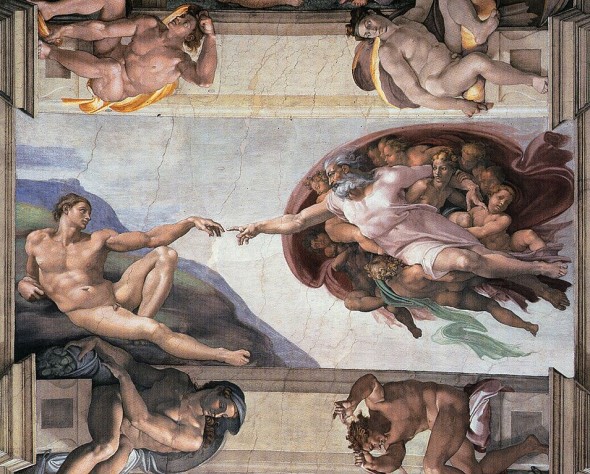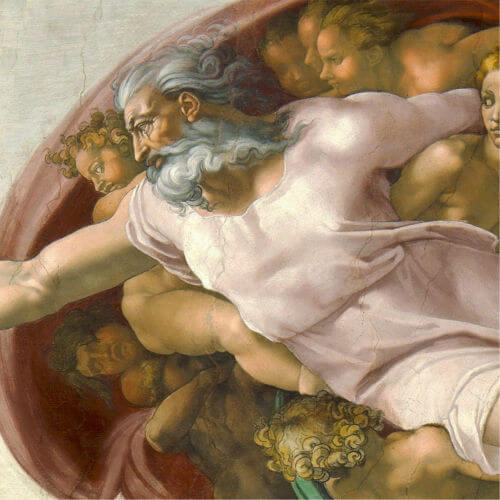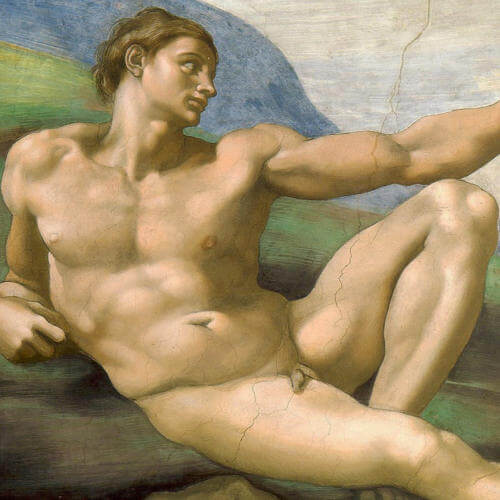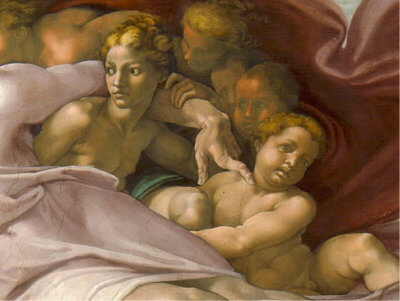Creation of Adam Sistine Chapel Funny

Michelangelo, Creation of Adam, from the ceiling of the Sistine Chapel in the Vatican, Rome, 1508-1512, fresco
The most famous section of the Sistine Chapel ceiling is Michelangelo's Creation of Adam. This scene is located next to the Creation of Eve, which is the panel at the center of the room, and the Congregation of the Waters, which is closer to the altar.
The Creation of Adam differs from typical Creation scenes painted up until that time. Here, two figures dominate the scene: God on the right, and 
Unlike the figure of God, who is outstretched and aloft, Adam is depicted as a lounging figure who rather lackadaisically responds to God's imminent touch. This touch will not only give life to Adam, but will give life to all mankind. It is, therefore, the birth of the human race. Adam's body forms a concave shape which echoes the form of God's body, which is in a convex posture inside the nebulous, floating form. This correspondence of one form to the other seems to underscore the larger idea of Man corresponding to God; that is, it seems to reflect the idea that Man has been created in the image and likeness of God – an idea with which Michelangelo had to have been familiar.

In all, the painting shows several hallmarks of Michelangelo's painting style: the lounging 
The Creation of Adam is one of the great jewels of Western art, though it and the rest of the Sistine Chapel ceiling suffered the ill effects of centuries of smoke that had caused the ceiling to darken considerably. It was not until 1977 that the cleaning of the ceiling was begun. The result of the cleaning was astonishing after its completion in 1989; what was once dark and drab became vivid. The change from pre-cleaning to post-cleaning was so great that some initially refused to believe that this is the way Michelangelo actually painted. Today, we have a much better understanding of Michelangelo's palette and the world he painted, beautifully captured across the ceiling of the Sistine Chapel.
Further Reading
The Sistine Chapel (Michelangelo: Selected Scholarship in English), edited by William Wallace
Steinberg, Leo. "Who's Who in Michelangelo's Creation of Adam: A Chronology of the Picture's Reluctant Self-Revelation." Art Bulletin (1992): 552-566.
The Creation Wall Sculpture in Ancient Stone
labarreagaincelow.blogspot.com
Source: https://www.italianrenaissance.org/michelangelo-creation-of-adam/
0 Response to "Creation of Adam Sistine Chapel Funny"
Post a Comment